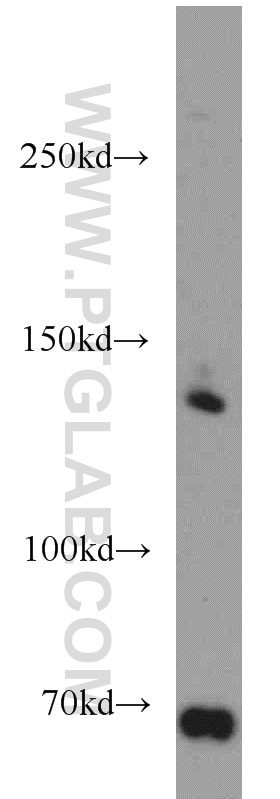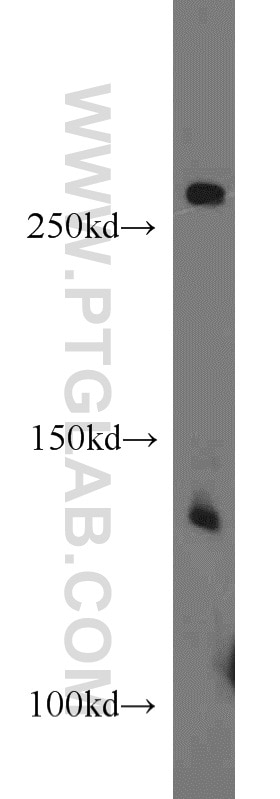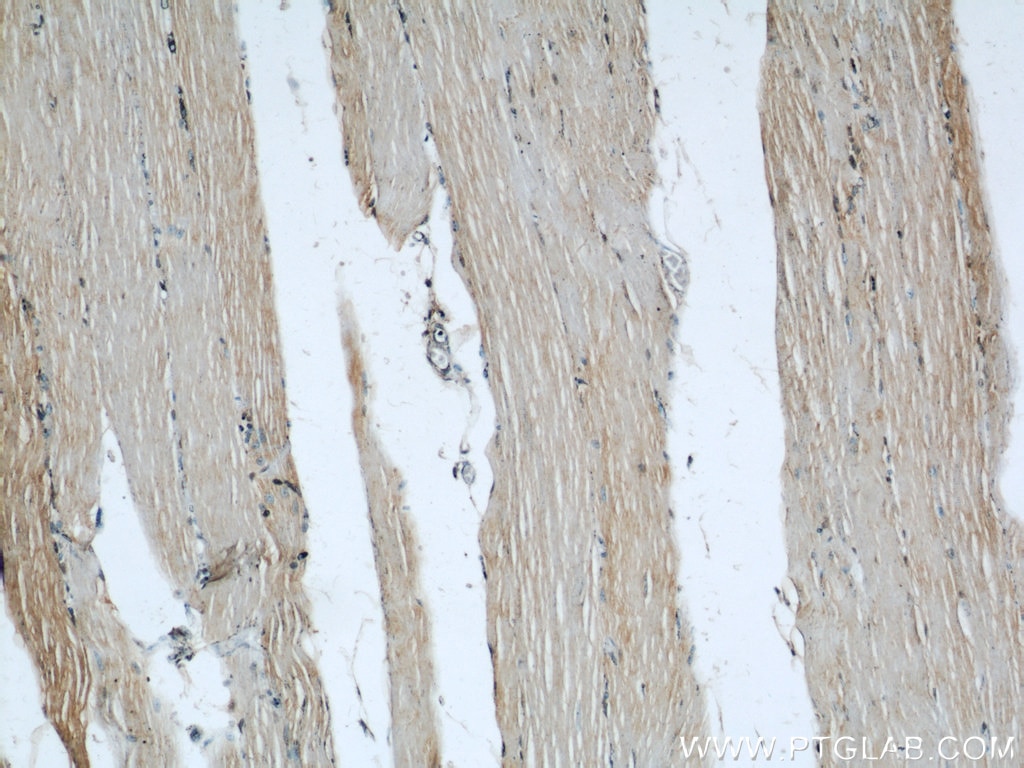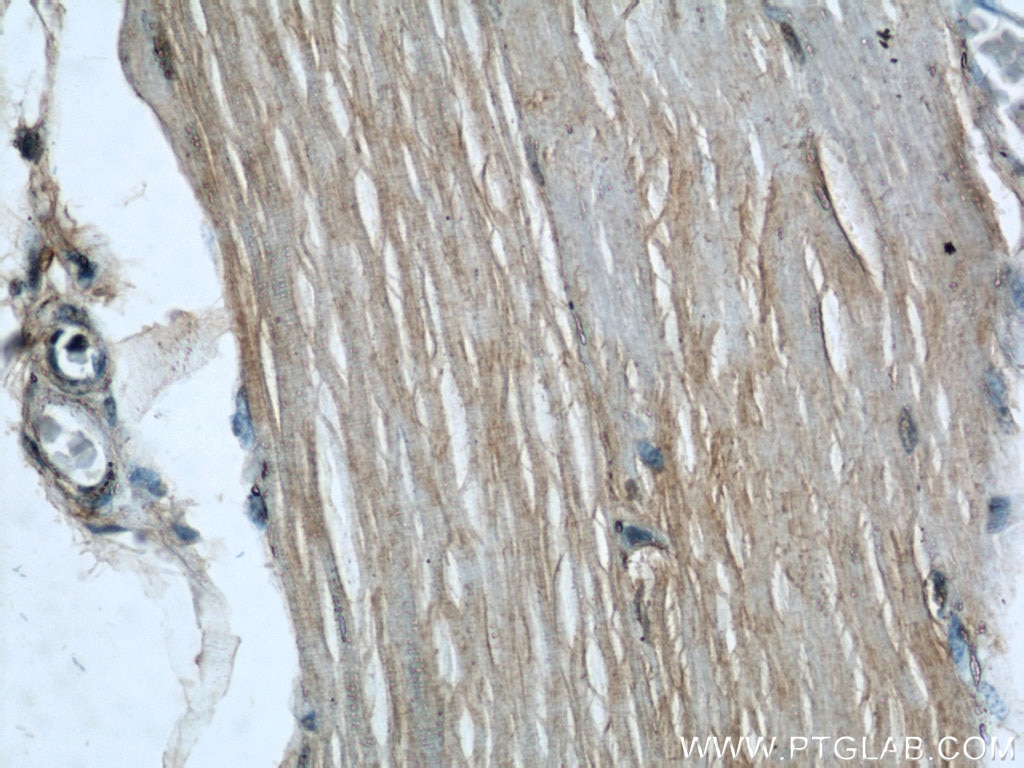- Phare
- Validé par KD/KO
Anticorps Polyclonal de lapin anti-Hamartin
Hamartin Polyclonal Antibody for WB, ELISA
Hôte / Isotype
Lapin / IgG
Réactivité testée
Humain, rat, souris
Applications
WB, IHC, IP, ELISA
Conjugaison
Non conjugué
N° de cat : 20988-1-AP
Synonymes
Galerie de données de validation
Applications testées
| Résultats positifs en WB | cellules HeLa, |
Dilution recommandée
| Application | Dilution |
|---|---|
| Western Blot (WB) | WB : 1:500-1:2000 |
| It is recommended that this reagent should be titrated in each testing system to obtain optimal results. | |
| Sample-dependent, check data in validation data gallery | |
Applications publiées
| KD/KO | See 5 publications below |
| WB | See 11 publications below |
| IHC | See 1 publications below |
| IP | See 1 publications below |
Informations sur le produit
20988-1-AP cible Hamartin dans les applications de WB, IHC, IP, ELISA et montre une réactivité avec des échantillons Humain, rat, souris
| Réactivité | Humain, rat, souris |
| Réactivité citée | Humain, souris |
| Hôte / Isotype | Lapin / IgG |
| Clonalité | Polyclonal |
| Type | Anticorps |
| Immunogène | Peptide |
| Nom complet | tuberous sclerosis 1 |
| Masse moléculaire calculée | 130 kDa |
| Poids moléculaire observé | |
| Numéro d’acquisition GenBank | NM_000368 |
| Symbole du gène | Hamartin/TSC1 |
| Identification du gène (NCBI) | 7248 |
| Conjugaison | Non conjugué |
| Forme | Liquide |
| Méthode de purification | Purification par affinité contre l'antigène |
| Tampon de stockage | PBS with 0.02% sodium azide and 50% glycerol |
| Conditions de stockage | Stocker à -20°C. Stable pendant un an après l'expédition. L'aliquotage n'est pas nécessaire pour le stockage à -20oC Les 20ul contiennent 0,1% de BSA. |
Informations générales
TSC1, also named as KIAA0243 and TSC, is implicated as a tumor suppressor. It is involved in microtubule-mediated protein transport, but this seems to be due to unregulated mTOR signaling. In complex with TSC2, TSC1 inhibits the nutrient-mediated or growth factor-stimulated phosphorylation of S6K1 and EIF4EBP1 by negatively regulating mTORC1 signaling. It seems not to be required for TSC2 GAP activity towards RHEB. It is involved in microtubule-mediated protein transport, but this seems to be due to unregulated mTOR signaling. Defects in TSC1 are the cause of tuberous sclerosis complex (TSC). Defects in TSC1 may be a cause of focal cortical dysplasia of Taylor balloon cell type (FCDBC). The antibody is specific to TSC1. This antibody can recognize two isoforms: 70 kDa (667aa) and 130 kDa.
Protocole
| Product Specific Protocols | |
|---|---|
| IHC protocol for Hamartin antibody 20988-1-AP | Download protocol |
| IF protocol for Hamartin antibody 20988-1-AP | Download protocol |
| Standard Protocols | |
|---|---|
| Click here to view our Standard Protocols |
Publications
| Species | Application | Title |
|---|---|---|
Sci Adv Synthetic lethality by targeting the RUVBL1/2-TTT complex in mTORC1-hyperactive cancer cells. | ||
Theranostics Combination therapy with ropivacaine-loaded liposomes and nutrient deprivation for simultaneous cancer therapy and cancer pain relief.
| ||
Mol Ther Nucleic Acids miR-301a Suppression within Fibroblasts Limits the Progression of Fibrosis through the TSC1/mTOR Pathway.
| ||
Sci Rep Tsc1 deficiency impairs mammary development in mice by suppression of AKT, nuclear ERα, and cell-cycle-driving proteins.
| ||
Biochem Biophys Res Commun UBE2S exerts oncogenic activities in urinary bladder cancer by ubiquitinating TSC1.
|





